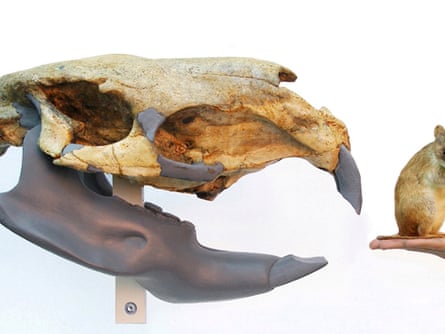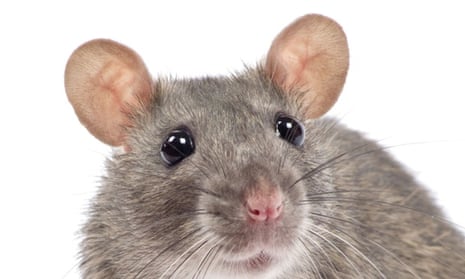“Rats could one day be bigger than COWS,” blurted the Daily Mail on Monday, instantly transforming a press release from the University of Leicester into breaking news. Within hours, other media were dutifully trotting out the story.
“Rats as big as sheep,” announced The Independent. “Super-sized rats,” reported The Express, with a bonus image of a rat photoshopped into a field of sheep. The BBC’s flagship radio programme Today covered it (listen again here). But the scaremongering title in The Metro is my personal favourite: “Rats ‘bigger than sheep’ could roam earth in future, experts warn.” This sounds like an article from The Onion or The Daily Mash but neither covered the cow-rat news (I checked).
So what’s this all about? I emailed the principal interviewee in the above “news” stories to find out. Jan Zalasiewicz, a geologist at the University of Leicester, was kind enough to get back to me immediately.
This story comes out of my and colleagues' ongoing work on the Anthropocene (the concept that the Earth may be entering a new geological epoch because of human action). It's simply an illustration of the far future evolutionary possibilities if the Earth (as currently seems likely) undergoes a mass extinction event. Rats (together with cats, rabbits, feral pigs and so on) look likely to be survivors of such an event – and therefore well placed to evolve to fill, over the coming millions of years, the vacated ecological niches.
The thought of “rats as future ancestors” is really interesting. But, as Zalasiewicz himself admits, “it’s not a very new idea.” It’s been around for more than 30 years, he tells me, and features in his 2008 book The Earth After Us. Still, it’s not one I’ve come across and I’m grateful to have been given the opportunity to contemplate it.
But the giant rats? Where do they come from? The press release. “Given enough time, rats could probably grow to be at least as large as the capybara, the world’s largest rodent, that lives today – that can reach 80 kilos. If the ecospace was sufficiently empty, then they could get larger still,” says Zalasiewicz. Then, in the next paragraph, we are told about Josephoartigasia monesi, the largest extinct rodent discovered to date, “larger than a bull” and weighing “over a ton.” I can’t see why this is relevant (unless perhaps you’re trying to hook an editor at the Daily Mail).

There is, in fact, some evidence for rats being larger when they are given ecological space. Compare the invasive black rats on two islands in the Mozambique Channel, as researchers did in the journal Oecologia a few years ago. On Juan de Nova Island, where there are quite a few other introduced species and a relatively complex ecology, the rats are typically around 125g. On nearby Europa, which is comparatively pristine, the rats are 165g. “On Juan de Nova, intrinsic factors such as predation by cats, and to a lesser extent resource competition with mice, are likely to have created selective pressure limiting the body-size of rats,” suggest the authors.
But even in an ecologically simplified world in which rats have come to dominate, there may be selection pressures that prevent them from reaching the size of J. monesi. Take climate, for instance. If there is significant warming as is anticipated in the Anthropocene, warm-blooded creatures may benefit from becoming smaller, thereby increasing their surface to volume ratio, helping them to dump heat more effectively and keep their body temperature under control.
To be fair to Zalasiewicz, he makes a similar point in the press release. “Animals can evolve to be smaller as well as larger sizes. This will depend on what particular circumstances they find themselves in and what the selective pressures on them are,” he says. “So there will be future thin rats, future fat rats, slow and heavy rats, fast and ferocious rats, probably future aquatic rats.” So there might be giant rats. Then again, there might not.
The Anthropocene is a serious subject that deserves to be taken seriously. The thought that giant and/or aquatic rats might be the only way to connect with the public leaves me profoundly depressed.

Comments (…)
Sign in or create your Guardian account to join the discussion